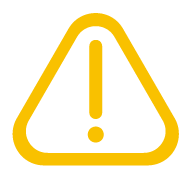What is Telehealth?
It is the use of electronic information and telecommunications technologies to support and promote long-distance clinical health care. It may be provided through audio, text messaging, or video communication technology, including video conferencing software.
 For reimbursement purposes, certain payers (including Medicare and Medicaid) may impose restrictions on the types of technologies that can be used. Please consult your payer directly pertaining to reimbursement rules and billing requirements.
For reimbursement purposes, certain payers (including Medicare and Medicaid) may impose restrictions on the types of technologies that can be used. Please consult your payer directly pertaining to reimbursement rules and billing requirements.
What is the Notification of Enforcement Discretion for Telehealth Remote Communications?
During the COVID-19 public health emergency, the Office for Civil Rights (OCR) at the U.S Department of Health and Human Services (HHS) activated its “Notification of enforcement discretion” and will not impose penalties for HIPAA violations against health care providers that serve patients through communications technologies during the COVID-19 nationwide public health emergency, when used in good faith for any telehealth treatment or diagnostic purpose, regardless of whether the telehealth service is directly related to COVID-19.
Are there any restrictions on which patients a healthcare provider can treat via telehealth under the “Notification of Enforcement Discretion”?
This Notification applies to all HIPAA-covered health care providers and has no limitation on the patients they serve with telehealth, including those patients that receive Medicare or Medicaid benefits.
How do I know if I’m covered under the Notification of Enforcement Discretion regarding COVID-19 and remote telehealth communications?
The Notification of Enforcement Discretion issued by the HHS Office for Civil Rights (OCR) applies to all health care providers that are covered by HIPAA and provide telehealth services during the emergency.
What services are covered through Telehealth by this Notification of Enforcement Discretion?
All services that a covered health care provider, in their professional judgment and in good faith, believes can be provided through Telehealth are covered by this Notification.
Where should a healthcare provider conduct Telehealth?
Providers should always use private locations (clinics, offices, etc.) and patients should not receive Telehealth services in public locations. If services can't be provided in a private setting, the provider should use reasonable precautions to limit incidental exposure of PHI.
Do I need to change my Place of Service (POS) code to get paid for Telehealth services?
Yes, If services were performed as telehealth services at a distant site, the Place of Service (POS) should be listed as 02 (Telehealth on the claim).
 Not all payers require the 02 Place Of Service (POS) when billing a telemedicine claim. We strongly suggest contacting the payer directly to verify which POS code you should bill with.
Not all payers require the 02 Place Of Service (POS) when billing a telemedicine claim. We strongly suggest contacting the payer directly to verify which POS code you should bill with.
Do I need to add CPT modifiers to Telehealth services claims?
You will typically need one of the following 3 modifiers when billing telehealth claims:
- A GT modifier is used for services rendered via an interactive audio and telecommunications system. This is the most commonly used modifier for telehealth claims.
- A 95 modifier is used for a synchronous Telemedicine Service rendered via a Real-Time Interactive Audio and Video Telecommunications System. Modifier 95 is only for codes that are listed in Appendix P of the CPT manual.
- A GQ modifier is used for an asynchronous telecommunication system visit. This means that medical care was provided via image/video that was not provided in real-time. A patient will undergo a service that is recorded as video or captured as an image, and the provider will evaluate it at a later time.
 These are only general guidelines. There may be some additional requirements that the payer may want on the claim. We strongly suggest contacting the payer directly to verify which Modifiers or additional requirements they have.
These are only general guidelines. There may be some additional requirements that the payer may want on the claim. We strongly suggest contacting the payer directly to verify which Modifiers or additional requirements they have.
What Modifiers do I need to use to bill telehealth claims to Medicare?
In most cases you don’t need additional modifiers to bill telehealth claims to Medicare since using the Place Of Service 02 signals to medicare that the service was provided via Telehealth.
There are 2 exceptions:
- A GT modifier will be used for Critical Access Hospital (CAHs) billing claims for distant site practitioners using method II (since institutional claims don’t use a POS.
- A GQ Modifier will be used for providers participating in the Alaska or Hawaii federal telemedicine demonstration programs. This is to maintain the distinction between synchronous (live) and asynchronous (previously recorded/captured) telehealth services.
 These are only general guidelines. We strongly suggest contacting the payer directly to verify you are following all of their billing requirements.
These are only general guidelines. We strongly suggest contacting the payer directly to verify you are following all of their billing requirements.